Inspiring the Next Generation of Humanitarian Mine Action Researchers
By Madison Tuohy,i Eva Greenspan,i Sofia Fasullo,ii Jasper Baur,iii Gabriel Steinberg,i Linda Zheng,i Alex Nikulin, PhD i, Garrett M. Clayton, PhD iv, Timothy S. de Smet, PhD i
CISR Journal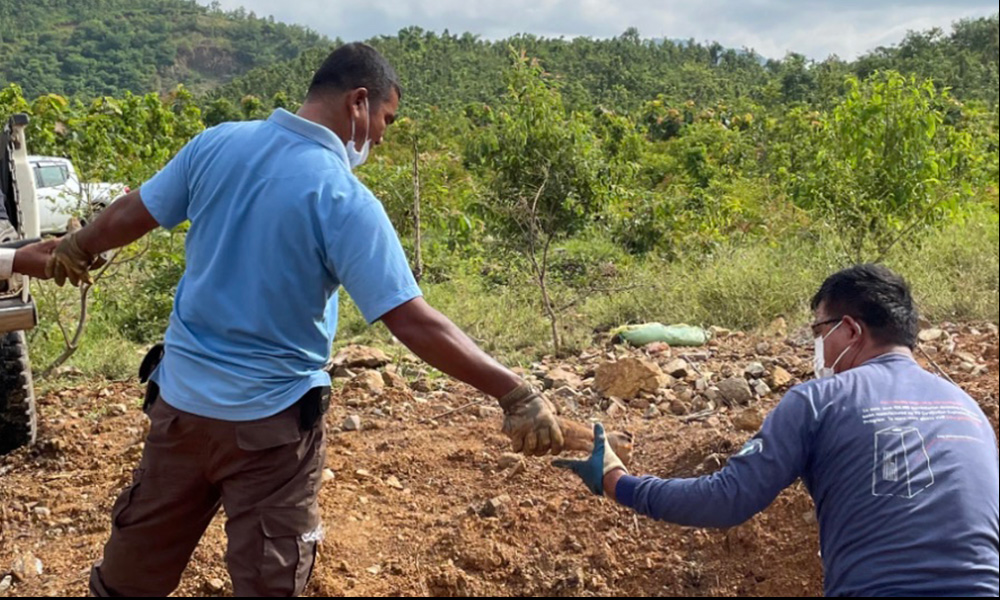
This article is brought to you by the Center for International Stabilization and Recovery (CISR) from issue 27.1 of The Journal of Conventional Weapons Destruction available on the JMU Scholarly Commons and Issuu.com.
iBinghamton University, iiUniversity of Pennsylvania, iiiColumbia University, ivVillanova University
Humanitarian mine action (HMA) is a critically under-researched field when compared to other hazards fields of similar societal impact. A potential solution to this problem is early exposure to and engagement in the HMA field in undergraduate education. Early undergraduate education emphasizing technical and social aspects of HMA can help protect lives by building a robust pipeline of passionate researchers who will find new solutions to the global explosive ordnance (EO) crisis. Early engagement of the next generation of HMA researchers and policy makers can occur through various classroom experiences, undergraduate research projects, and public outreach events. These include but are not limited to course-based undergraduate research experiences (CUREs); presenting research results at local, national, and international conferences; dissemination in edited and peer-reviewed publications; local community events; and through social media outreach. Early engagement, active guidance, and mentorship of such students by mid-career and experienced HMA scholars and practitioners could dramatically reduce the learning curve associated with entry into the HMA sector and allow for more fruitful long-term collaboration between academic institutions, private industry, and leading nongovernmental organizations (NGOs) operating across different facets of HMA.
Introduction
Young scientists tend to share a singular goal: to make the world a better place. Guiding this passion from initial inspiration to meaningful contribution is an important task of the broader HMA community. In this paper we discuss how different levels of engagement are an effective tool to inspire the next generation of HMA researchers at the university level. We propose that thoughtful and consistent implementation of HMA-inspired technical and non-technical curriculum and practical research elements could drive awareness of the challenges faced by practitioners and allow university students to both contribute to meaningful research projects and avoid some of the pitfalls associated with transitioning theory into practice. We brought together several academic perspectives that span the range from early undergraduate students just entering the field to career researchers active in HMA research and development. We present these perspectives to both reveal the inspiration and passion driving students to enter the field of applied HMA research and highlight some of the practical and institutional knowledge gaps that students and their academic advisors may not be aware of. The intention of this paper is to start an active dialogue in the community as to what practices might help engage the next generation of HMA researchers.
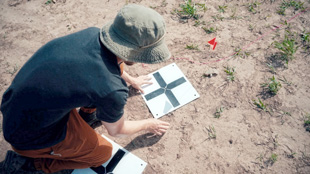
Setting up a ground control point for unmanned aerial vehicle (UAV)-based controlled experiments at Oklahoma State University’s Center for Fire and Explosives (CENFEX). Note inert PFM-1 in the background. Image courtesy of Jasper Baur.
The Student Perspective
As first-year researchers, several student authors were introduced to HMA efforts early in their undergraduate studies. Prior academic experiences at the university level did not expose us to the extent of the EO crisis in post-conflict nations until we began working with the researchers of the Geophysics & Remote Sensing Laboratory (GRSL) at Binghamton University (BU) and the Center for Nonlinear Dynamic & Control at Villanova University. It was through this involvement that we learned about the importance of EO detection and the novel research that was being conducted in these labs. The strategic introduction of HMA by professors and research advisors who strongly advocated for and informed students about unique challenges in demining also played a vital role in getting us involved. HMA is an extremely interdisciplinary field, meaning students from all disciplines, such as engineering, physical sciences, humanities, and more can be inspired to work in HMA.
We believe an impactful way to accelerate progress in the HMA sector is to involve those from all disciplines to collaborate and communicate ideas. A CURE, such as the First-year Research Immersion (FRI) program at BU, is a fast-growing pedagogical approach that emphasizes active student learning. In the FRI program, students address high-impact, realistic “sticky wicked” problems from their first day of class. The FRI program seeks to cultivate the hard and soft skills necessary for the twenty-first century knowledge economy by introducing incoming undergraduate students to complex research problems. Specifically, our HMA-directed research provides students with the opportunity to learn invaluable skills, such as collaboration and working in a team setting. Through this program students also gain quantitative, communication (both written and oral), leadership, and critical and analytical thinking skills. Many students emerge from this program with a new-found passion for HMA research on EO detection and elimination.
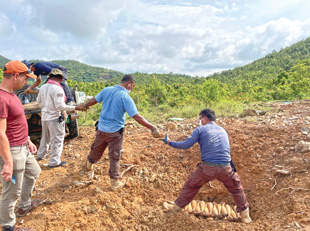
EOD near Kampong Chhnang, Cambodia, July 20, 2022. Image courtesy of Timothy S. de Smet.
Fieldwork campaigns have been crucial to the success of student led HMA research projects at both BU and Villanova University and present a particularly engaging and exciting opportunity for students. HMA is an active applied discipline and should be taught as it is practiced. By actively engaging students, we create a lifelong learning experience where the students learn to appreciate the gravity of HMA research in their daily lives. Conducting fieldwork with students, whether it be in Cambodia or local experimental test trials, introduces them to the exciting, inspiring, and rewarding aspect of HMA while also being labor intensive and challenging. Showing the challenging nature of the field is another method of our outreach that enables students to appreciate the demining process in its entirety. Introducing students to the fieldwork we conduct is a fantastic way to gauge their interest on the subject and recruit them into HMA research. Being in the affected areas, seeing EO in person, and collaborating with those directly impacted by this problem is a very rewarding and inspirational experience that can motivate students to become a part of the solution.
Making HMA Research Commonplace
Disseminating the results of HMA research efforts with the scientific community is imperative for an open discussion on the merits of this evolving field.1 These efforts include presentations and publications geared toward the scientific community. Our research groups frequently present at major conferences like the American and European Geophysical Union (AGU2,3 and EGU respectively) meetings and the Geneva International Centre for Humanitarian Demining (GICHD) Mine Action Technology Workshops.4 Publishing in open access journals like The Journal of Conventional Weapons Destruction and Remote Sensing allows the scientific community, the HMA sector, and the public at large to evaluate the veracity of our research results.5,6,7,8,9 Making data from our research (such as imagery of mine fields) available on open-source repositories and websites such as the Open Repository at BU (ORB)10 and GitHub11 improves the accessibility for other groups to begin similar HMA research projects and build off of existing work. The utilization of these platforms allows for our research to be available to potentially have a much broader impact. Presently, we are exploring the use of social media (which has shown success in increasing landmine awareness among children) to attract younger audiences to HMA research.12
Spreading awareness to the general public through community engagement is an important way to mainstream HMA research. This can be done by speaking on panels, visiting local high schools, and participating in outreach organizations that host insightful panel events in communities. For instance, author Madison Tuohy gave presentations and demonstrations flying unmanned aerial vehicles (UAVs) with the Women and Drones organization. Authors Jasper Baur and Gabriel Steinberg co-founded the Demining Research Community (DRC), an NGO focused on researching and developing innovative uses for remote sensing and machine learning to improve the efficiency and safety of landmine and unexploded ordnance (UXO) detection. Our team has also been interviewed by popular news outlets like Scientific American, 13,14 Popular Mechanics,15 PBS,16 DER SPIEGEL,17 TECH BRIEFS,18 Eos,19 NPR, and National Geographic.20 Maintaining strong ties to legacy news media ensures that our HMA research reaches as broad an audience as possible and raises awareness of this humanitarian crisis.
Growing Social Media Awareness
Sharing the importance of HMA with the public via social media is key to growing the demining community. Social media is a viable medium for spreading awareness about the lives of those living in areas plagued by mines, as the utilization of large platforms can reach widespread, diverse, and younger audiences. Social media platforms like Instagram are particularly useful to attract younger college-age audiences. The question is now what kinds of posts will capture the attention of younger audiences? For instance, an effective use of social media that does not use exploitive imagery of victims is light-hearted posts about current methods of detection. A unique example of this approach is the heroRATS used by APOPO, a Belgian NGO that trains rats to sniff out landmines, which has accumulated over 36,700 Instagram followers.21 These rats are likely to be more physically appealing to younger audiences who are unaware of HMA than the traditional drones and sensors used to detect mines on account of their “cute” and familiar appearance as well as the novelty of using rats to detect bombs/mines. The social media presence of heroRATS is not huge at the time of this publication but there are many ways to boost their pages as their media appeals to numerous kinds of audiences. People who are enthusiastic about animals, interested in HMA, environmentally driven, etc., can all appreciate the content posted by heroRATS. It is now a matter of bringing attention to their pages in order to spread awareness about the issues at hand and how they are creatively combating them. Other HMA groups also have an Instagram social media following, such as: Norwegian People's Aid (NPA) (930 Instagram followers), GICHD (1,301 Instagram followers), Mines Advisory Group (MAG) (5,659), and The HALO Trust (16,200 Instagram followers). It is obvious that the heroRATS social media presence on Instagram is greater than several NGOs combined. Although successful demining NGOs are clearing more area, they are garnering less social media attention and therefore less awareness than more light-hearted approaches.
Additionally, professional development platforms such as LinkedIn and ResearchGate are also effective at reaching target audiences. Considering that HMA is a relatively niche career field, professional social media is a great way to find and connect with other researchers in the field. Through this, we are able to share our work and communicate ideas with like-minded individuals.22 LinkedIn and ResearchGate are both beneficial in providing various research and project opportunities. Once connected with fellow researchers, we can discuss our projects and data with other people, often leading to opportunities to discover new perspectives and build our network further. Through these platforms, researchers can stay up to date on recent publications in their field and connect with researchers sharing similar interests. This form of professional social media keeps researchers in similar fields connected for updates and advancements in a rapidly changing research community.
The Need for Jobs in HMA
It has been said that at the current rate of disposal it will take over one thousand years until we have a mine free world. We desperately need to research more efficient methods of mine detection; however, building a pipeline of researchers ready to directly enter the HMA field is only useful if there are career opportunities available for them pre- and post-graduation. Student researchers need opportunities for early exposure and engagement in the HMA field through paid internships and fellowships. HMA education in college curricula can also help to inform, inspire, and provide critical context for young researchers interested in working abroad in post-conflict countries, even if HMA is not their area of focus. Careers in the HMA field can range from office work on advocacy, risk education, publications, and research, with organizations like the United Nations and NGOs, to direct work in the field as an explosive ordnance disposal (EOD) operator with NGOs. Several coauthors on this publication are academic researchers; and although our contributions to HMA research are growing, as can be seen in the case study found later in this article, it is still nowhere near other hazardous areas of research, like volcanology.
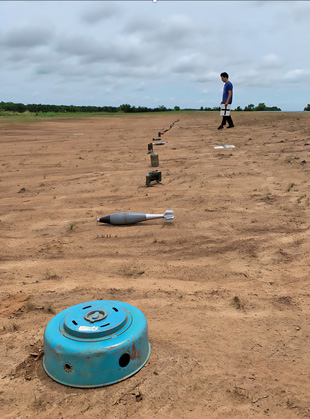
Emplacing EO in a simulated minefield for UAV-based experiments at Oklahoma State University's CENFEX. These EO include anti-tank mines, anti-personnel mines, mortars, and various explosive remnants of war (ERW). Image courtesy of Jasper Baur.
University students are rarely exposed to HMA research and education in their curriculum, even if they’re conducting research in post-conflict contexts. Early exposure to and education about HMA is not only beneficial for HMA researchers but for all students engaged in research in post-conflict countries. At BU, the recently established Institute for Genocide and Mass Atrocity Prevention (I-GMAP) awards six Bloom Family Summer Internships of $7,000 annually to undergraduate students studying in the field of genocide and mass atrocity prevention. Students who were awarded this internship conducted fieldwork abroad in post-conflict and conflict-affected countries like Cambodia and Armenia. In such countries where mine detection, or the lack thereof, continues to pose a direct threat to civil society, the intersection of mine detection and the nascent field of transitional justice highlights the need for collaboration of HMA across disciplines.
BU students conducting fieldwork in Cambodia and Armenia benefited from a unique perspective drawn from coursework in conflict prevention, early HMA education, and their lived experiences working in the field. In Armenia, the student drew from coursework on the Armenian Genocide to conduct field research on memorialization of the Genocide and long-term impacts of trauma across generations. Their field research was enhanced by the local context of armed conflict with Azerbaijan and the persistence and proliferation of landmines that continue to pose a threat in Armenia. Students conducting research abroad in post-conflict contexts such as Cambodia, Armenia, Bosnia and Herzegovina, and elsewhere often come face to face with the reality of the EO crisis in their research. When HMA education is made available to students at the university level, they are better prepared to conduct research and work in conflict-affected regions post-graduation.
There are also several career development opportunities for recent graduates. The United States Department of State’s Office of Weapons Removal and Abatement (PM/WRA) annually awards two Frasure-Kruzel-Drew Memorial Fellowships, which are two-year paid full-time positions administered by the Center for International Stabilization and Recovery (CISR) at James Madison University. Mine Action Canada’s Mine Action Fellows program also provides annual fellowship opportunities. Paid internship and fellowship opportunities are key to not only attracting high-achieving students but also increasing diversity in HMA, since socioeconomically disadvantaged groups cannot afford to take unpaid internships during the summer.
Demining research can be successfully introduced to younger audiences of researchers as demonstrated by the efforts from universities such as BU and Villanova. By building a direct pipeline for students to access upon entering higher education, HMA can become a viable career for young, emerging scientists and provide invaluable context for conflict-prevention researchers and practitioners. Through participating in fieldwork, disseminating the result of our research, and getting involved through social media, these outreach efforts will continue to inspire students to iterate novel advancements to this rapidly advancing field.
The Researcher Perspective
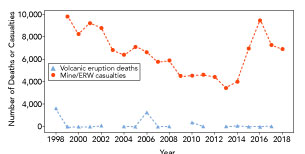
Figure 1. This figure shows the number of deaths or casualties resulting from mines and EO in orange compared to volcanic eruption related deaths in blue from 1998 to 2018. All graphics courtesy of the authors.
To demonstrate that HMA is largely under-researched and less publicly accessible compared to fields of similar humanitarian impact, we have provided a case study on comparing HMA to the field of volcanology. In many ways these two fields are similar in scope of problem and the underlying goal to mitigate risk of explosive hazards, whether that be naturally occurring in the case of volcanic eruptions or anthropogenically produced in the case of landmines. Active volcanoes are found in eighty-six countries and territories globally, with over 29 million people living within ten kilometers of an active volcano, causing an average of 541 deaths per year since 1500 AD.23,24 Landmines contaminate at least sixty counties and regions, resulting in an average of 6540 ± 1900 casualties per year from 1998 to 2018, of which about three in four are civilian casualties and thirty-nine percent of the total casualties resulted in death in 2021 (see Figure 1). 25,26 Multiplying these statistics to estimate the average amount of civilian deaths over the last several decades yields a harrowing number of approximately 1,900 civilian deaths per year, just less than four times greater than those caused by volcanoes. One discrepancy is that volcanic-related deaths usually are the result of large eruptions causing pyroclastic flows or lahars that kill many people in a single event, whereas mine-related deaths are more constant throughout the year.
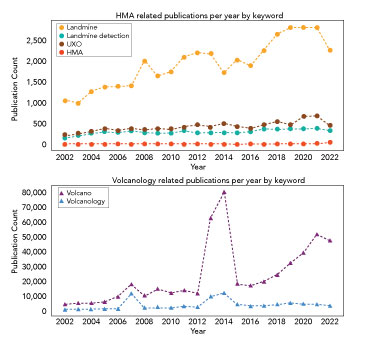
Figure 2. The top panel shows the number of publications that mention the defined keywords related to HMA from 2002 to 2022. The bottom panel shows publication count mentions of volcanology keywords, but the y-axis is much greater than the top panel. Data compiled using https://bit.ly/3BEW4O1.
Given mines and explosive remnants of war (ERW) on average cause more deaths and harm to society than volcanoes, one would expect a commensurate amount of research on the subject to mitigate risk in the academic sector. To assess the research activity of volcanology and HMA, we used keywords in publications including “landmine,” “unexploded ordnance,” “landmine detection,” and “volcano” as common keywords and compiled all publications that mention those keywords using the dimensions.ai database. Additionally, we compared “humanitarian mine action” to “volcanology” as keywords representative of the research fields. This method is subject to overestimating the total number of publications due to articles that merely mention the key words in passing but are not the main subject of the paper. Despite this, we believe the relative trends shown in Figure 2 are indicative that there is far greater research activity in volcanology—a field with a similar magnitude of societal impact on human life to that of landmines and ERW. Comparing just the sector-wide keywords of “volcanology” versus “humanitarian mine action” from 2002–2022, “volcanology” appeared an astonishing 183 times more than “humanitarian mine action.” Even in the broader keyword category search, “volcano” was used 8.6 times more than “landmine,” “UXO,” and “landmine detection” combined in publications in the last two decades based on the dimensions.ai database. It is important to note that much of HMA research is done in the private, government, and military sectors, and not published in academic journals. This highlights the fact that even if this research is occurring behind closed doors, it is not accessible to the broader community, making it more difficult to push advances in the field.
Conclusions
The final takeaway is that HMA is fundamentally under-researched for its given impact on society. We propose this issue, on an academic level, stems in part from lack of exposure to the mine action sector at the undergraduate level, creating a negative feedback loop of talented students not being introduced to HMA or trained to research new solutions to the ongoing humanitarian crisis. Active undergraduate research experiences are critical to early career engagement and retention. Dissemination of HMA research through traditional methods at professional meetings and peer-reviewed publications is necessary for open scientific discussion, while dissemination via outreach events and social media can potentially attract more diverse and younger groups. To remedy this issue and change the current culture in universities globally, we believe exposure and engagement is crucial to create a paradigm shift towards academic demining research.
Acknowledgements
We would like to thank Jennifer Risser and Sabryn Hebert for their thoughtful reviews that have helped greatly improve the quality of this manuscript.
Madison Tuohy
Binghamton University
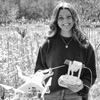 Madison Tuohy is a senior at Binghamton University majoring in Geophysics. Her main research interests are the advancement on novel methodologies like hyperspectral imaging, LiDAR, and time-domain electromagnetic-induction to detect EO, UXO, abandoned explosive ordnance (AXO), anti-vehicle or anti-tank mines, cluster bombs or munitions, and anti-personnel landmines. Tuohy is a United States Department of Agriculture Natural Resource Conservation Service Pathways Geological Researcher. She is the Chief Engineer and founder of the Drone subteam and Geologist team lead of Binghamton University’s Mars Rover team. She has been published in The Leading Edge and received funding from the National Science Foundation’s (NSF) XCEED Fellowship program, NASA Student Leadership Scholarship, Harpur Edge Student Support fund, and the Harpur High Impact Award. She is an FAA part 107 certified remote pilot and has logged hundreds of hours of flight time.
Madison Tuohy is a senior at Binghamton University majoring in Geophysics. Her main research interests are the advancement on novel methodologies like hyperspectral imaging, LiDAR, and time-domain electromagnetic-induction to detect EO, UXO, abandoned explosive ordnance (AXO), anti-vehicle or anti-tank mines, cluster bombs or munitions, and anti-personnel landmines. Tuohy is a United States Department of Agriculture Natural Resource Conservation Service Pathways Geological Researcher. She is the Chief Engineer and founder of the Drone subteam and Geologist team lead of Binghamton University’s Mars Rover team. She has been published in The Leading Edge and received funding from the National Science Foundation’s (NSF) XCEED Fellowship program, NASA Student Leadership Scholarship, Harpur Edge Student Support fund, and the Harpur High Impact Award. She is an FAA part 107 certified remote pilot and has logged hundreds of hours of flight time.
Eva Greenspan
Binghamton University
 Eva Greenspan is a junior at Binghamton University double majoring in Industrial Systems Engineering and Mathematics. She was introduced to demining through AFROTC and began research in the HMA field through the Freshman Research Immersion program at Binghamton University. She now conducts research in the Geophysics and Remote Sensing Laboratory with a focus on magnetometry, UXO, and other EO. Her current project is for a user-friendly ground-coupling remote sensing “SnakeBot” to be used for humanitarian demining in heavily vegetated areas of Cambodia, established through a partnership between Villanova University and Binghamton University, and funded by the NSF.
Eva Greenspan is a junior at Binghamton University double majoring in Industrial Systems Engineering and Mathematics. She was introduced to demining through AFROTC and began research in the HMA field through the Freshman Research Immersion program at Binghamton University. She now conducts research in the Geophysics and Remote Sensing Laboratory with a focus on magnetometry, UXO, and other EO. Her current project is for a user-friendly ground-coupling remote sensing “SnakeBot” to be used for humanitarian demining in heavily vegetated areas of Cambodia, established through a partnership between Villanova University and Binghamton University, and funded by the NSF.
Sofia Fasullo
University of Pennsylvania
 Sofia Fasullo graduated from Binghamton University with dual BAs in Statistics and Geography, with a Concentration in Computer Applications in Human Environmental Analysis. She is currently a master’s student at the University of Pennsylvania for dual degrees in Urban Spatial Analytics and City Planning Programs. She has conducted research in Cambodia on the use of robotics and remote sensing to detect EO. She has received funding for her research from the NSF’s IRES program and the Institute for Genocide and Mass Atrocity Prevention. She has disseminated the results of her research at the American Geophysical Union Fall Annual Meeting and in The Journal of Conventional Weapons Destruction. She also won the State University of New York system-wide Chancellor’s Award for Student Excellence.
Sofia Fasullo graduated from Binghamton University with dual BAs in Statistics and Geography, with a Concentration in Computer Applications in Human Environmental Analysis. She is currently a master’s student at the University of Pennsylvania for dual degrees in Urban Spatial Analytics and City Planning Programs. She has conducted research in Cambodia on the use of robotics and remote sensing to detect EO. She has received funding for her research from the NSF’s IRES program and the Institute for Genocide and Mass Atrocity Prevention. She has disseminated the results of her research at the American Geophysical Union Fall Annual Meeting and in The Journal of Conventional Weapons Destruction. She also won the State University of New York system-wide Chancellor’s Award for Student Excellence.
Jasper Baur
Columbia University
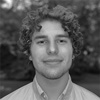 Jasper Baur is a doctoral student at Lamont Doherty Earth Observatory at Columbia University studying physical volcanology with a specialization in remote sensing. He graduated from Binghamton University in May 2020 with a BS in Geological Sciences and a double minor in Geographic Information Systems and Graphic Design and with a master’s from Columbia University in 2022. Baur has been an active member of the Geophysics and Remote Sensing Laboratory at Binghamton University since its inception in 2016, primarily researching ways to improve the detection of the PFM-1 butterfly landmine. He was the first undergraduate to receive the American Geophysical Union's David Miller Young Scientist scholarship in 2018, as well as the recipient of the Barry Goldwater Scholarship in 2019 and the National Science Foundation's Graduate Research Fellowship Program in 2020. He is an FAA 107 certified UAS remote pilot and is passionate about merging art and science.
Jasper Baur is a doctoral student at Lamont Doherty Earth Observatory at Columbia University studying physical volcanology with a specialization in remote sensing. He graduated from Binghamton University in May 2020 with a BS in Geological Sciences and a double minor in Geographic Information Systems and Graphic Design and with a master’s from Columbia University in 2022. Baur has been an active member of the Geophysics and Remote Sensing Laboratory at Binghamton University since its inception in 2016, primarily researching ways to improve the detection of the PFM-1 butterfly landmine. He was the first undergraduate to receive the American Geophysical Union's David Miller Young Scientist scholarship in 2018, as well as the recipient of the Barry Goldwater Scholarship in 2019 and the National Science Foundation's Graduate Research Fellowship Program in 2020. He is an FAA 107 certified UAS remote pilot and is passionate about merging art and science.
Gabriel Steinberg
Binghamton University
 Gabriel Steinberg completed his Computer Science B.S at Binghamton University and is currently studying to obtain his Computer Science M.Sc. at Karlsruhe Institute for Technology with a concentration in artificial intelligence. His main research interest is in computer vision with the goal of detecting scatterable landmines in post-conflict countries. He has published his research in The Journal of Conventional Weapons Destruction as a co-author and in Remote Sensing as second author and has presented his research at several geophysics and humanitarian mine action conferences. He has worked as an undergraduate research assistant at multiple universities, focusing on data science and machine learning applications in bioinformatics, passive bioacoustic monitoring, and large-scale software agent simulations.
Gabriel Steinberg completed his Computer Science B.S at Binghamton University and is currently studying to obtain his Computer Science M.Sc. at Karlsruhe Institute for Technology with a concentration in artificial intelligence. His main research interest is in computer vision with the goal of detecting scatterable landmines in post-conflict countries. He has published his research in The Journal of Conventional Weapons Destruction as a co-author and in Remote Sensing as second author and has presented his research at several geophysics and humanitarian mine action conferences. He has worked as an undergraduate research assistant at multiple universities, focusing on data science and machine learning applications in bioinformatics, passive bioacoustic monitoring, and large-scale software agent simulations.
Linda Zheng
Binghamton University
 Linda Zheng graduated from Binghamton University with dual BAs in Environmental Planning and Philosophy, Politics, and Law with a concentration in Genocide Studies. She was a student researcher at the Geophysics and Remote Sensing Laboratory where she became acquainted with remote sensing and its multidisciplinary applications, particularly in the field of human rights. Zheng was one of the first recipients of the Institute for Genocide and Mass Atrocity Prevention’s Bloom Family Summer Internship. During her internship she traveled to Armenia to research the Armenian Genocide and collect oral histories from descendants of the survivors. Since graduating she has worked for a number of non-profit organizations in Washington, DC and Bosnia and Herzegovina dedicated to genocide prevention, transitional justice, and peacebuilding.
Linda Zheng graduated from Binghamton University with dual BAs in Environmental Planning and Philosophy, Politics, and Law with a concentration in Genocide Studies. She was a student researcher at the Geophysics and Remote Sensing Laboratory where she became acquainted with remote sensing and its multidisciplinary applications, particularly in the field of human rights. Zheng was one of the first recipients of the Institute for Genocide and Mass Atrocity Prevention’s Bloom Family Summer Internship. During her internship she traveled to Armenia to research the Armenian Genocide and collect oral histories from descendants of the survivors. Since graduating she has worked for a number of non-profit organizations in Washington, DC and Bosnia and Herzegovina dedicated to genocide prevention, transitional justice, and peacebuilding.
Alex Nikulin, PhD
Binghamton University
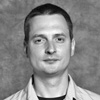 Professor Alex Nikulin earned his PhD from Rutgers University in 2011 and joined the Binghamton University faculty as an assistant professor in 2015. His research focuses on the broad field of Energy Geophysics, with applications in classic seismology, exploration geophysics, as well as the emerging field of automated geophysical surveying. Professor Nikulin is co-founder of the Geophysics and Remote Sensing Research Laboratory at Binghamton University, a collaborative academic platform that brings together undergraduate and graduate researchers, faculty from multiple departments of Binghamton University, as well as multiple industry, academic, government, and NGO partners, to work on resolving critical issues facing society through innovative applications of geophysical techniques.
Professor Alex Nikulin earned his PhD from Rutgers University in 2011 and joined the Binghamton University faculty as an assistant professor in 2015. His research focuses on the broad field of Energy Geophysics, with applications in classic seismology, exploration geophysics, as well as the emerging field of automated geophysical surveying. Professor Nikulin is co-founder of the Geophysics and Remote Sensing Research Laboratory at Binghamton University, a collaborative academic platform that brings together undergraduate and graduate researchers, faculty from multiple departments of Binghamton University, as well as multiple industry, academic, government, and NGO partners, to work on resolving critical issues facing society through innovative applications of geophysical techniques.
Garrett M. Clayton, PhD
Villanova University
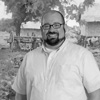 Garrett Clayton, PhD, is the Associate Dean of Graduate Studies and Director of the Center for Nonlinear Dynamics and Control at Villanova University. His research focuses on the instrumentation and control for nanotechnology, image-based control of scanning probe microscopes, and high-speed scanning probe microscopy for bio/nanotechnologies.
Garrett Clayton, PhD, is the Associate Dean of Graduate Studies and Director of the Center for Nonlinear Dynamics and Control at Villanova University. His research focuses on the instrumentation and control for nanotechnology, image-based control of scanning probe microscopes, and high-speed scanning probe microscopy for bio/nanotechnologies.
Timothy de Smet, PhD
Binghamton University
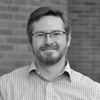 Timothy S. de Smet, PhD, is a Research Assistant Professor in the Department of Geological Sciences and Environmental Studies, Director of the Geophysics and Remote Sensing Laboratory, and leader of the Geospatial Remote Sensing/Environmental Visualization with Drones research stream in the First-year Research Immersion at Binghamton University. His areas of expertise are aerial remote sensing and near-surface applied geophysics. Dr. de Smet’s research utilizing frequency and time-domain electromagnetic-induction, magnetometry, ground-penetrating radar, and aerial LiDAR and thermal infrared remote sensing has been published in Geophysics, Remote Sensing, Near Surface Geophysics, Journal of Applied Geophysics, Sedimentary Geology, PLOS ONE, Archaeological Prospection, The Journal of Conventional Weapons Destruction, and The Leading Edge. Dr. de Smet has received funding for his research from the National Science Foundation, National Geographic Society, National Park Service, and United States Geological Survey. He is an FAA 107 certified UAS remote pilot.
Timothy S. de Smet, PhD, is a Research Assistant Professor in the Department of Geological Sciences and Environmental Studies, Director of the Geophysics and Remote Sensing Laboratory, and leader of the Geospatial Remote Sensing/Environmental Visualization with Drones research stream in the First-year Research Immersion at Binghamton University. His areas of expertise are aerial remote sensing and near-surface applied geophysics. Dr. de Smet’s research utilizing frequency and time-domain electromagnetic-induction, magnetometry, ground-penetrating radar, and aerial LiDAR and thermal infrared remote sensing has been published in Geophysics, Remote Sensing, Near Surface Geophysics, Journal of Applied Geophysics, Sedimentary Geology, PLOS ONE, Archaeological Prospection, The Journal of Conventional Weapons Destruction, and The Leading Edge. Dr. de Smet has received funding for his research from the National Science Foundation, National Geographic Society, National Park Service, and United States Geological Survey. He is an FAA 107 certified UAS remote pilot.
